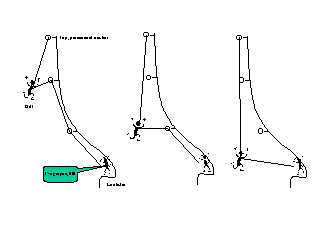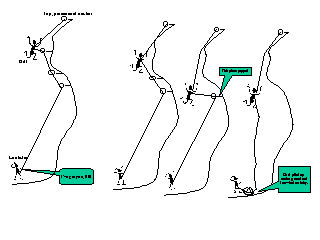Leaning Tower Situation

Key points:
* There is no "ground" in this situation. The bottom of this route is hundreds of overhanging feet above the ground.
* The belayer (Loobster) is not in line with the top piece. So when all the pieces are nclipped, the rope makes a sharp angle. When I unclip the last piece the rope wants to pull through the belayerís device. He doesnít allow this to happen and I donít swing out very far and I couldnít fall down the rope because of the tension induced by gravity and the angle of the rope.
D & T Situation

Key points:
* The belayer is standing on the ground
* The lower pieces have already been removed when the second tried to follow the pitch .Lower pieces would have stopped the fall before the ground. Or caused the final fall to be much closer to the ground.
* The belayer (Loobster) is in line with the top piece. So when all the pieces are unclipped, the rope doesnít pull tight, but goes slack. The rappel belay requires a tight rope. Remember, my hands were not on my brake line. When the rope
went slack, I free fell to the ground.